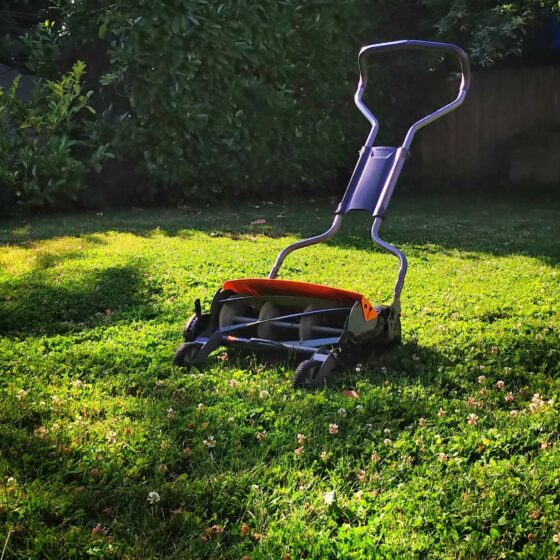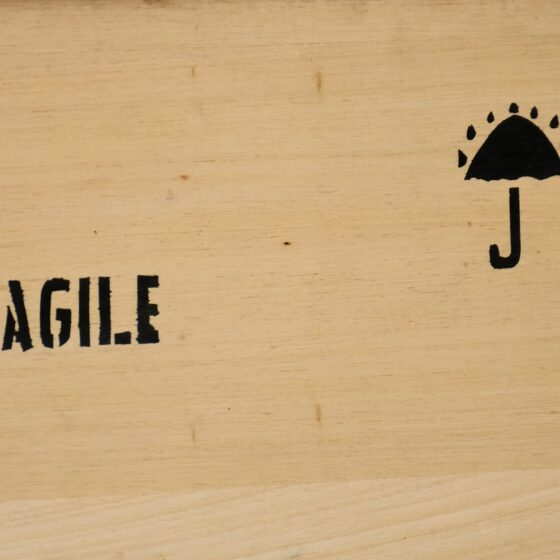Toys are our first possessions, and through them, we learn to discover and interact with the material world around us. Current toy industry statistics show that moderate consumption is not what the big players have in mind when marketing toys to our youngest.
Both new marketing channels and certain manufacturing methods can have a negative effect on our little ones. With this in mind, it would be reasonable to take an informative look at the industry behind our children’s favorite action figures to prevent this.
From manufacturing processes to selling trends, find out more about the global toy industry and the US’s spot in it within these statistics and facts.
The Top 10 Key Toy Industry Statistics and Highlights
- The global toy market was worth $90.4 billion in 2018.
- Spin-off toy merchandise from movie blockbusters makes up 10% of toy sales in the UK.
- British children typically play with only 5% of their toys.
- The US is the biggest importer of toys in the world.
- 90% of toy factories are based in China.
- The Japanese company Namco Bandai has overthrown Lego as the world’s leader in the toy industry.
- Nearly 97% of the national US toy demands in 2020 will be met with imports, according to toy industry analysis for 2020.
- The game, doll, and toy manufacturing industry in the US is currently worth $2 billion.
- There are more than 21,200 businesses in the US offering online toy sales.
- Sales of outdoor and sports toys increased by 51% in April 2020 in comparison with the same period in 2019.
The Latest Toy Industry Facts & Figures from Across the Globe
In this section, read about the global toy market, toy sales, and more.
1. The global toy market was worth $90.4 billion in 2018.
(PR News Wire, Statista)
The global toy manufacturing industry stats show growth of $13.2 billion over a decade’s time (2008–2018), and the global toy market size is expected to reach over $120 billion by 2023.
In comparison, in 2019, the American toy market’s size reached $27 billion in revenue, with toy sales accounting for $20.91 billion.
The annual sales of action figures, dolls, plush toys, games and puzzles, and other toys in the US have dropped since 2017—when they reached $22.16 billion.
2. Toy sales statistics worldwide noted a 3% decrease in annual sales for 2019.
(NPD)
Following statistics of toy sales in 13 of the biggest markets worldwide, toy sales are dropping across the globe. During this period, the US, the UK, and Australia saw major toy shop chains shut down—and with this, the largest drop in annual sales for 2018–2019 (5%).
In the European toys market, sales decreased by 1% during this period, whereas percentages for toy sales were up in Brazil (2%), Russia (5%), and Germany (3%).
3. Connected toys will be overflowing the market in the near future, toy industry facts confirm.
(PR News Wire)
On a global scale, the toy market is going through a digital metamorphosis with the creation of so-called connected toys, internet of things statistics confirm.
In 2019, the drone-connected, smartphone-connected, and console-connected toys market was worth around $5.7 billion. The market’s growth rate is estimated to continue at an impressive 19.3% per year, which means that by 2024, the connected toy industry worldwide will reach $13.8 billion.
4. Spin-off toy merchandise from movie blockbusters makes up 10% of toy sales in the UK, toy industry statistics show.
(BBC)
The British spent around $4.05 billion on toys in 2018, and around 30% of these annual sales were made around Christmas.
The average child younger than 11 years received around eight Christmas gifts in the UK, with an average value of $107 per child.
In 2019, only 23% of toy sales in the UK were licensed products, and blockbuster spin-off merchandise accounted for approximately 10%. Needless to say, big franchises like Star Wars and Frozen led the way.
5. British children typically play with only 5% of their toys, toy facts reveal.
(Telegraph)
Telegraph found that an average British child owns 238 toys in total, but they will play with only 12—their favorites. Ohio researchers backed this behavior, stating that many toys won’t help a child develop creativity.
In an experiment involving 36 toddlers, researchers observed that 4 toys are enough for the children to remain stimulated. They’ll even make up different uses for the toys, and in that way, they develop their creativity.
6. In Europe, half the toys found to be toxic were made of plastic, international toy facts conclude.
(EEB)
What environmentalists call the “silent pandemic” is the concerning trend of illegal quantities of toxic chemicals found in children’s toys.
In 2019, in Europe, 248 models of toys—likely totaling tens of millions of units—were found to be contaminated with toxic materials. These materials include boron and phthalate, a toxic plastic additive, according to the European Environmental Bureau.
92% of these toys were categorized as a “serious risk” to children’s health. This phenomenon, caused by faulty recycling processes, has opened the way for the DIY toy trend, DIY stats reveal.
Top Players in the Toy Industry: Facts and Stats
Which country is the largest importer of toys? Which company is the leader in the toy industry? These are just a couple of questions that we’ll answer in this section.
7. The US is the biggest importer of toys in the world.
(World’s Richest Countries)
In 2017, the US imported $32.7 billion worth of toys, ranking as the biggest toy importer in the world and accounting for 27.6% of the global toy imports.
Following the US, Germany’s toy imports were worth $7.8 billion, and Japan imported $6.6 billion worth of toys.
The US is also ranked as the third country in the world based on toy exports, following China and Hong Kong. In 2017, the US exported toys with an estimated worth of $6.9 billion.
8. Toy factory facts note that 90% are based in China.
(IBIS World)
The toy manufacturing industry in China generated around $39.5 billion in 2019, which is a 3% increase since 2018, despite the slowing down of global toy sales. China is the world’s leader in manufacturing toys, accounting for approximately 70% of the total toys on a global level.
In fact, around 692,644 Chinese workers are employed in 1,655 businesses in China’s toy manufacturing industry.
9. The Japanese company Namco Bandai has overthrown Lego as the world’s leader in the toy industry, stats from 2018 reveal.
(Statista, Hasbro, Vault)
Namco Bandai, the Japanese company behind some of the biggest video game franchises, like Pac-Man and Tekken, reported revenue of $6.6 billion in 2018, surpassing the Danish Lego Group with its reported $5.5 billion in revenue.
Other top-five ranking toy brands include Hasbro (Monopoly and Twister) with $4.58 billion and Mattel (Barbie and Polly Pocket) with $4.51 billion in toy sales.
10. Toy facts reveal that adults in North America spend more on toys each year than adults in any other region in the world.
(Statista)
In 2018, North Americans spent an average of $306 on toys per child aged 0–9 years, a Statista survey finds. Americans and Canadians spent an average of $70 more than the second-ranked group, Oceania, which spent $236.
In the same year, Europeans bought $215 worth of toys for kids younger than 10, whereas Asians spent $33 in total. Meanwhile, Africans spent only $7, and South Americans, $44.
11. Toy marketing statistics show that kid influencers account for an enormous part of the toy industry’s growth.
(Toy Book, Spielwarenmesse)
Alongside video games and movie franchises, so much toy marketing attention is put into the so-called unboxing YouTube channels that first appeared in 2011. Kid influencers earn millions with these videos—which serve as personalized ads—and this marketing method, until recently, didn’t undergo any regulations. These videos contribute directly to the growth of the toy industry.
To give you an idea of the impact that unboxing channels have, there were around 97,000 social media posts made during the trade show at Toy Fair New York in 2019.
Toy Industry Statistics & Facts in the US
In this section, you’ll find out how much the toy industry is worth in the US, what the most popular toys are, as well as some shocking stats about injuries caused by toys.
12. The game, doll, and toy manufacturing industry in the US is currently worth $2 billion.
(IBIS World)
This number may seem impressive, but the growth of this industry in the US isn’t. Estimated at only 0.2%, the annual growth rate for the 2015–2020 period will likely be even slower in the years to come.
13. 97.2% of national US toy demands for 2020 were met with imports, toy industry market statistics indicate.
(IBIS World)
American toy, doll, and game manufacturers are forced to compete with imports with lower prices that overflow the American toy market. This trend threatens US toy manufacturing industry growth.
14. Toy industry statistics from 2019 show that plush toy sales plummeted more than any other type of toy.
(NPD)
The NPD Group’s toy sales research shows that, together with vehicle toys and outdoor toys, plush toys reported the biggest losses in sales over the 2018–2019 period (-10%).
On the other hand, with an increase of 9% in total retail sales, dolls gained in popularity in 2019. Action figures and accessories followed this trend and marked an 8% increase in annual sales.
The only other toy category with increased sales for 2019 was youth electronics, with just a 1% annual increase.
15. In 2018, there were 226,100 toy-related emergency visits in the US, official statistics for toy injuries reveal.
(CPSC)
More than half (56%) of these injuries happened to boys, and about 70% of the injured were younger than 12 years of age, as stated in 2018’s Consumer Product Safety Commission report.
Outdoor sport toys, like non-motorized scooters, were involved in 3 of the 17 toy-related fatalities, and another 3 were caused by asphyxiation from rubber balls and balloons
16. There are more than 21,200 businesses in the US offering online sales, toy statistics from 2019 confirm.
(IBIS World)
IBIS World data reveals that sales of toys online accounted for $21 billion in 2019.
As the number of online shoppers continued to grow from 2014 to 2019, this market saw a solid growth rate of 13.3% on the annual level.
In the US, around 32,000 employees provided online retailing for toys in 2019, among which the biggest employers per market share were Amazon and Walmart.
17. During the 2019 holiday season, the nerf gun was the most popular toy in 11 American states.
(WQAD)
Holiday season statistics on toy sales are an accurate way to determine what the trending kid’s toys will be for that year. However, there’s an even easier way: by using the Google research entries data for toys in this period. This shows online toy sales statistics in detail.
Results for 2019 show that in almost 20% of the US, Nerf guns were the most popular toy, followed by gaming systems, which were popular in five states. Other popular toys were the American Girl Dolls and Play-Doh, each taking the lead in four American states.
18. Toy sales statistics reveal that sales of outdoor and sports toys increased by 51% in April 2020 in comparison with the same period in 2019.
(NPD)
The swell in purchases of outdoor and sports toys in April 2020 was influenced by the Coronavirus lockdown, which forced American families to spend more time in their backyards. This resulted in an additional $193 million in toy sales in this category.
The biggest surge of purchases compared to 2018 was noted in sales of portable pools (+161%), followed by skateboards, skates, and scooters (+107%), as well as playground equipment (+81%).
19. Action figures and accessories in the US made up 8.18% of the total sales revenue in the toy industry, facts for retail sales in 2019 reveal.
(Statista, Ask Wonder)
The toy sales of action figurines and their accessories are constantly increasing, accounting for almost 8.2% of the US toy market share in 2019.
In 2016, action figurines accounted for 7% of the total US toy market—or about $1.45 billion in earnings. For comparison, Americans spent around $1.71 billion on action figure toys and accessories in 2019.
20. 3% of dog owners’ basic expenditures were spent on toys in 2019, dog toy market statistics reveal.
(American Pet Products, Research Nester)
Dog and cat owners spend more on toys and accessories for their pets than they did five years ago, a recent survey reveals.
The most recent pet ownership statistics show an increase in annual toy sales for dogs, which reached $48 in 2019, and $31 for cats. These figures are not insignificant since 63.4 million Americans in 2018 were estimated to own a dog, and 42.7 million owned a cat.
To Sum Up
Even as toy sales in several markets have begun to propel thanks to entertainment and social media, the toy industry facts are showing the industry’s struggle to survive the new digital era by trying to fuse with it.
In an evermore competitive toy market, manufacturers are designing new solutions that offer educational aid for children. However, in the process, they may also introduce toxins into our homes.
Seeing these toy industry statistics leading up to 2022 and understanding how tough the global toy market is can only leave us with the conclusion that, when it comes to profits, the toy industry is not playing around.
FAQs
Is the toy industry growing?
The worldwide toy industry is growing at a CAGR of 4% for the period of 2017–2023, according to PR News Wire. The fastest-growing segment of the toy market is that of connected toys, which experienced annual growth of 19.3% during this period.
(PR News Wire)
How competitive is the toy industry?
The global toy industry is very competitive, especially in the new and fast-developing market of smart and connected toys and gaming products.
Many large players recognized the potential of this type of toy as an educational tool for children and are competing for customer’s attention through the use of social media and other digital platforms.
(Globe News Wire)
How large is the toy industry?
The global toy industry size in 2019 reached $90.4 billion, which by 2023 is expected to rise to over $120 billion. The US toy industry size is approximately $27 billion.
(IBIS World, Statista)
Are toy sales declining?
Global toy sales have been declining ever since 2017, especially in certain Western countries. In fact, global toy sales were 3% lower in 2019 than in 2018, but this phenomenon differed across regions and countries.
The US, the UK, and Australia experienced a 5% drop in sales in the 2018–2019 period, whereas in Russia, toy sales increased by 5%, in Germany by 3%, and in Brazil by 2%, according to toy industry statistics.
(NPD)













